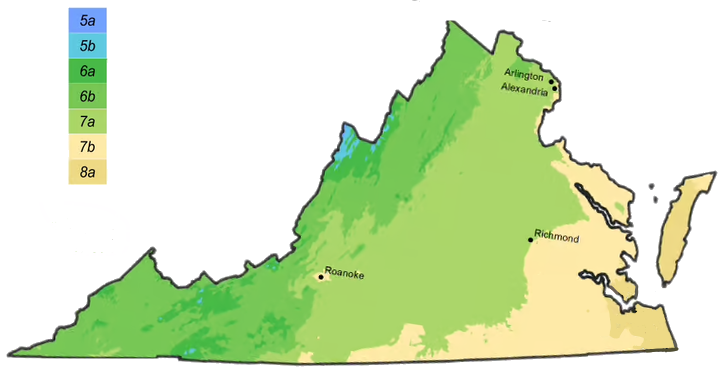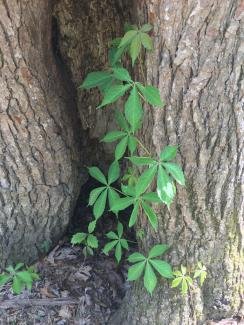
Ubiquitous in an extraordinary range of wet to very dry, forested to open habitats; tolerant of a range of soil types, tolerant of deep flooding, capable of rooting in deep outcrop crevices and boulder-field interstices that exclude other plants; scarce at the highest elevations. Common throughout; certainly one of the most widely distributed species in Virginia.
It can be a vigorous spreader, but its attractive foliage and low maintenance can make it a feasible option for difficult-to-grow, shady, droughty, low-fertility, erosion-prone places.
Wildlife value: During the summer months, inconspicuous flowers attracts bees, and offers bird nest sites and cover. During winter months, birds are not only attracted to the red leaves, but also to the bluish-black berries that the vine produces. More than 35 species of birds enjoy eating the Virginia Creeper’s berries, including: thrushes, woodpeckers, warblers, vireos, mockingbirds and other songbirds. While animals such as mice, skunks, chipmunks, squirrels, cattle and deer will munch on the leaves and stems of this vine, it is the insect class that relishes the plant. The Virginia Creeper Sphinx Moth, the Achemon Sphinx moth and the Grapeleaf Skeletonizer use the plant as its larvae host.
Poisonous to Humans
Poison Severity: High
Poison Symptoms: May be fatal if fruit is eaten. Can result in nausea, abdominal pain, bloody vomiting, and diarrhea, dilated pupils, headache, sweating, weak pulse, drowsiness, twitching of the face.
Earth Sangha Inventory
Founded in 1997, the Earth Sangha is a nonprofit public charity based in the Washington, DC, region. The Wild Plant Nursery is the most comprehensive source of local-ecotype, native plants in the Washington DC region, and the region’s only facility dedicated exclusively to this type of propagation. “Local-ecotype” plants are propagated from local, wild, naturally-occurring populations and are well-adapted to local conditions and for wildlife species that depend on the local forms, such as pollinators. Inventory is updated on a weekly basis so number may not be accurate.
| Pots Available | Plugs Available | Location | Notes | ||
|---|---|---|---|---|---|
| 82 | 0 | Row 18 | View My Wishlist |
